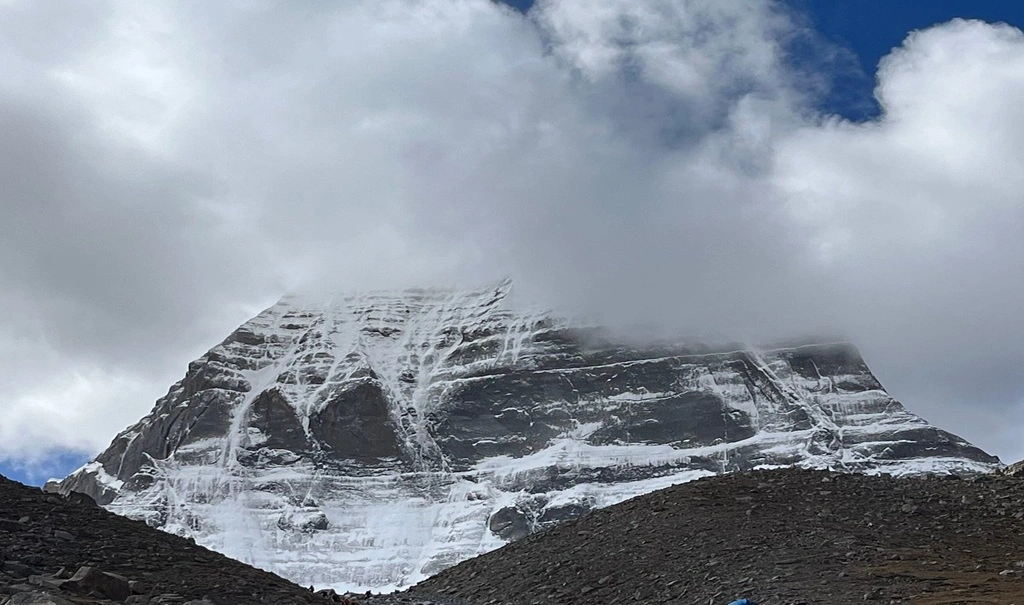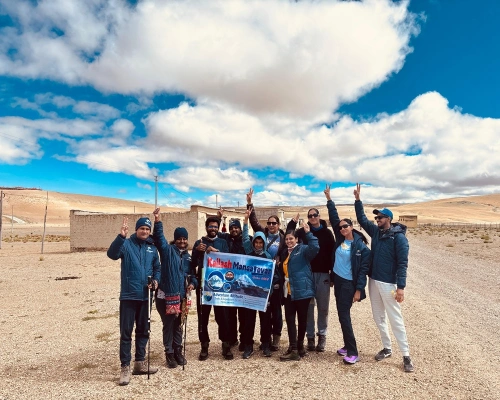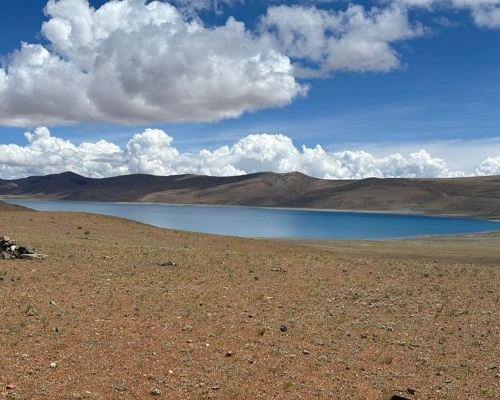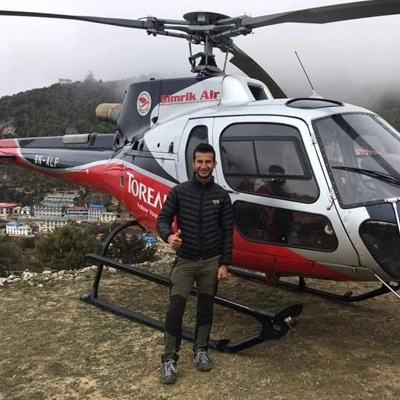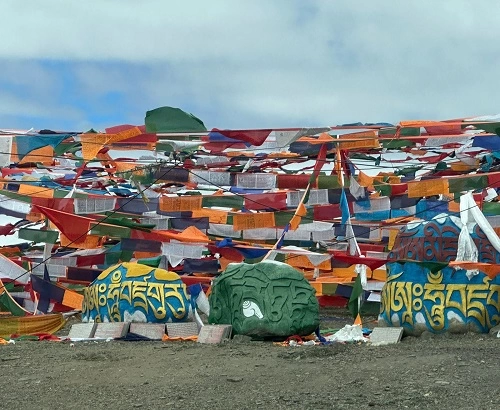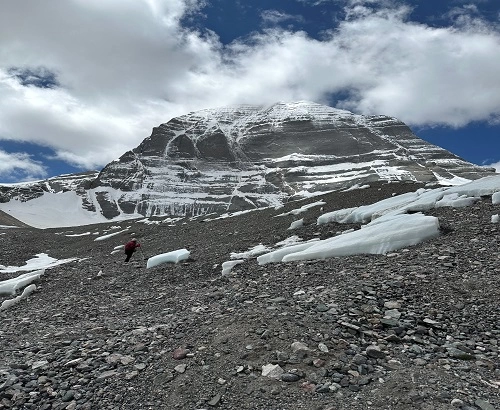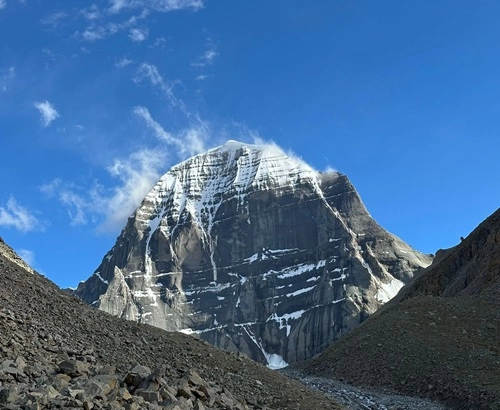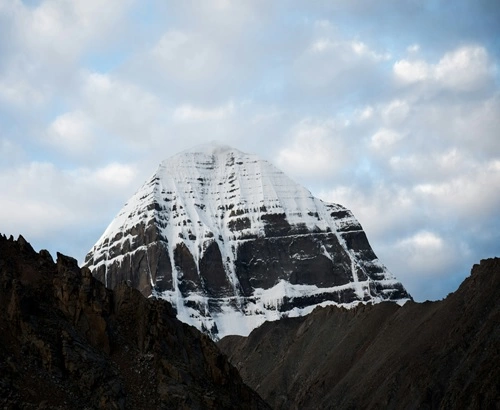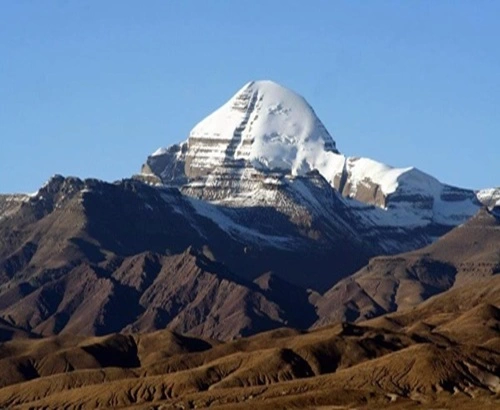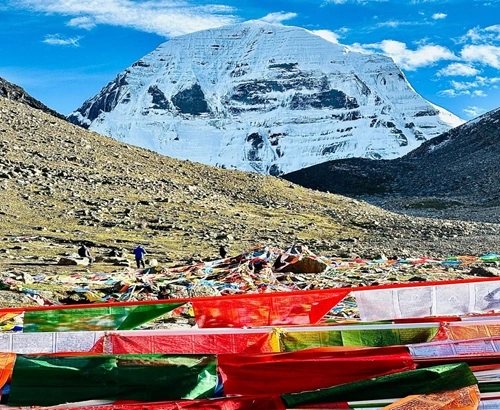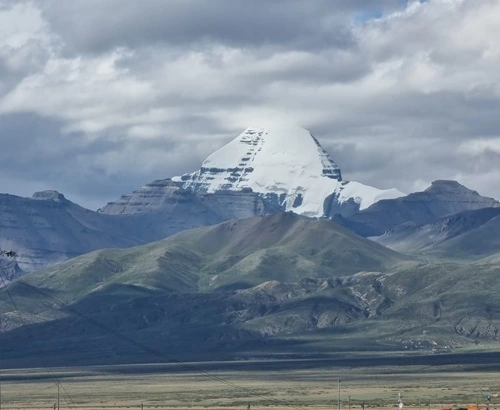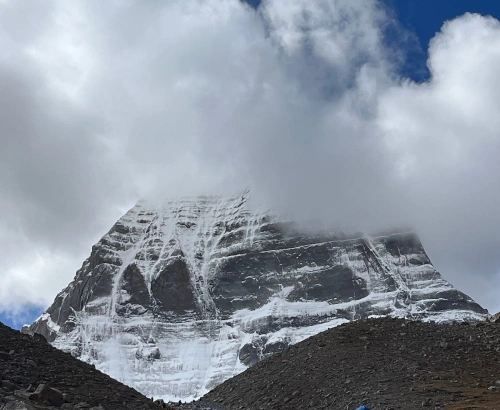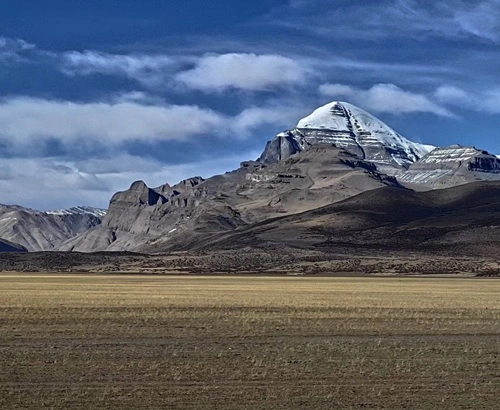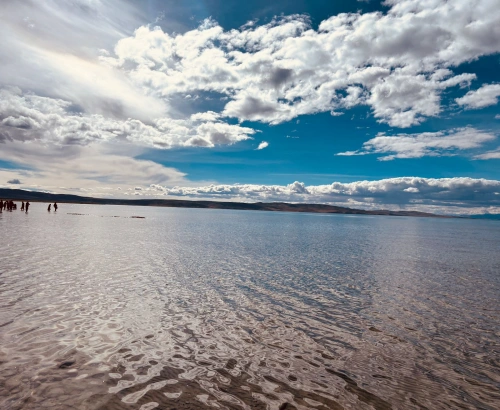Introduction To Kailash Mansarovar Yatra In Full Moon Trip
A full moon Mount Kailash Manasarovar trip 2026 is typically at least a 14-day trip (includes road trip, spiritual journey, and 53 km circumambulation (Kora/Parikrama) aspects around Mount Kailash). The trip is significant, offering the chance, with the full moon casting bright light above, to experience the holy Lake Manasarovar.
Travellers from all over the world plan to arrive at Lake Manasarovar for their Full Moon Kailash Yatra 10 Days, at this holy hour, as purification, spiritual energy, and blessings reach very high on this night. A full moon night at Lake Manasarovar, the shimmering Lake Manasarovar reflecting the bright moon above, is a time, impossible to schedule, with the island's incomparable peace, and it offers a once in a lifetime experience.
Mount Kailash is central to Hindu belief as it is the home of Lord Shiva and Goddess Parvati, and therefore, it is one of the holiest pilgrimage sites on the planet. This mountain is sacred to Buddhists as Kangri Rinpoche, the site of Buddha's meditation for enlightenment. Jains observe that it is the location where their first Tirthankara attained liberation.
To followers of Bon, it is the world's savior for spiritual pursuits. The entire experience is enhanced under a full moon because many consider that prayers, meditations, and rituals on a full moon night absolve sins and redirect souls toward liberation with exponentially more power.
This 10-Day Kailash Mansarovar Full Moon Tour 2026, operated by Adventure Altitude Treks, occurs during May through September. The tours travel in small groups to minimize costs and encourage companionship. Pilgrims not only complete the three-day Kora circle around Kailash but also receive the unique blessing of sleeping at Lake Manasarovar on a supermoon night.
This Kailash Full Moon Trip 2026 offers an unforgettable spiritual journey. A journey this spiritual draws strength from the common bond of nature, divine expression, and verified inner faith.
Everyone considering this pilgrimage generally builds in key full moon dates such as Buddha Purnima, Guru Purnima, and Saga Dawa to make their pilgrimage align with the cosmic connection and spiritual power.
Highlights Kailash Parvat Full Moon Trip 10 Days
- A 10-day spiritual expedition to Mount Kailash (Kailash Parvat) in Tibet.
- Experience Kathmandu's cultural visit, discovering local temples, markets, and heritage sites.
- Overland to the Nepal-Tibet border from Kathmandu with beautiful Himalayan landscapes along the way.
- Get to the Mt. Kailash area, the most venerable place of Earth seen from the perspective of Hindus, Buddhists, Jains, and Bon followers.
- Start on the 3-day Kora (Parikrama) around Mount Kailash, the very deep and holy pilgrimage.
- Enjoy the incredible views of the Himalayas, the Tibetan plateau, and see rare animals living at high altitudes.
- Go to the world-famous monasteries like Dirapuk and Zuthulphuk which are very important for the spiritual life of Kailash.
- Experience the amazing Dolma La Pass trek at 5,860 meters where you will have a lot of fun.
- Meet the Tibetan pilgrims and monks, do prayers, rituals, and share cultural experiences.
- Plenty of time for meditation, thinking, and spiritual practice in the calm and quiet beauty of nature.
- A difficult physical journey that is very rewarding spiritually and enlightening.
- Much more than a pilgrimage to the mystical “Center of the World,” a journey that changes body, mind, and soul.
What is the Kailash Mansarovar Yatra Full Moon Tour in 2026?
Kailash Mansarovar Yatra Full Moon Tour 2026 will be a beautiful spiritual pilgrimage with full moon nights as the theme.
People view Kailash as the heavenly abode of Lord Shiva, and Mansarovar symbolizes purity, holding the highest importance in the Hindu, Buddhist, Jain, and Bon traditions.
In 2026, Full Moon Tour to Kailash and Mansarovar featuring special full moon departures will allow participants to witness the divine reflection of Mount Kailash in the crystal clear waters of Mansarovar, with the moonlight illuminating one of the most sacred and revered mountains on Earth.
People also believe that the energy of a normal moonlight evening magnifies and multiplies at the group and individual level, enhancing spiritual energy, blessings, and the feeling of inner peace.
Groups perform these rituals on full moon nights, and even if not, participants undertake parikrama (circumambulation) of Mount Kailash and take a holy dip into Mansarovar Lake, making this one of the most sacred yatras of 2026.
Kailash Mansarovar Yatra Fixed Departure Calendar 2026 with Full Moon Days
We have very carefully adjusted our Kailash Mansarovar fixed departure dates for 2026 in such a way that these dates are full moon days, so that you can visit Mansarovar lake and Kailash mountain at times that are the most spiritually potent.
The full moon, particularly during festivals like Saga Dawa, is considered to be an excellent time to perform rites like Rudrabhishek, holy dips, and the 52-km kora, as these are believed to be equal to 13 koras in the Tibetan Year of the Horse (2026).
These days make travel easy, allow for proper acclimatization, and provide the best conditions for spiritual practices.
April 2026
Arrival in Kathmandu | Visa Apply Date | Tour End Date | Special Note |
20 April 2026 (Monday) | 21 April 2026 (Tuesday) | 03 May 2026 (Sunday) | – |
May 2026
Arrival in Kathmandu | Visa Apply Date | Tour End Date | Special Note |
11 May 2026 (Monday) | 12 May 2026 (Tuesday) | 24 May 2026 (Sunday) | – |
19 May 2026 (Tuesday) | 20 May 2026 (Wednesday) | 01 June 2026 (Monday) | Saga Dawa Festival |
June 2026
Arrival in Kathmandu | Visa Apply Date | Tour End Date | Special Note |
08 June 2026 (Monday) | 09 June 2026 (Tuesday) | 21 June 2026 (Sunday) | – |
21 June 2026 (Sunday) | 22 June 2026 (Monday) | 04 July 2026 (Saturday) | Full Moon |
July 2026
Arrival in Kathmandu | Visa Apply Date | Tour End Date | Special Note |
06 July 2026 (Monday) | 07 July 2026 (Tuesday) | 19 July 2026 (Sunday) | – |
20 July 2026 (Monday) | 21 July 2026 (Tuesday) | 02 August 2026 (Sunday) | Full Moon |
August 2026
Arrival in Kathmandu | Visa Apply Date | Tour End Date | Special Note |
17 August 2026 (Monday) | 18 August 2026 (Tuesday) | 30 August 2026 (Sunday) | – |
31 August 2026 (Monday) | 01 September 2026 (Tuesday) | 13 September 2026 (Sunday) | – |
September 2026
Arrival in Kathmandu | Visa Apply Date | Tour End Date | Special Note |
14 September 2026 (Monday) | 15 September 2026 (Tuesday) | 27 September 2026 (Sunday) | – |
28 September 2026 (Monday) | 29 September 2026 (Tuesday) | 11 October 2026 (Sunday) | – |
October 2026
Arrival in Kathmandu | Visa Apply Date | Tour End Date | Special Note |
18 October 2026 (Sunday) | 19 October 2026 (Monday) | 31 October 2026 (Saturday) | Full Moon |
2026 Kailash Mansarovar Yatra: Embrace the Tibetan Fire Horse Year
2026 is the Fire Horse Year of the Tibetan Calendar, an extremely rare and important year in the Tibetan and Chinese astrological systems. Fire Horse is one of the 60-year cycle elemental and zodiac animal combinations, and is associated with bringing energetic dynamism, vigor, and change of the kind.
The Fire Horse is depicted as brave, loving, and having an explorer's mindset, thus 2026 becoming a very potent year to have a spiritual journey such as the Kailash Mansarovar Yatra. The devotees going for the yatra of this year are envisaged to have their spiritual energies amplified and to receive God's grace. Fire horse year in Tibetan culture is metaphorically linked to the qualities of strength, bravery, health, and spiritual growth.
Pilgrims convey that the Mount Kailash sacred power gets more potent and transformative in such a special year. One Kora (circumambulation) around Mount Kailash in 2026 is considered equivalent to twelve Koras done in any other year — thus the rapture of blessings, cleansing, and divine connection gets multiplied.
Indeed, 2026 is the best year to make a Kailash Yatra. The following fire horse year will not come until 2038, so this is a spiritual journey of a lifetime.
What is the Fire Horse Year?
In the Chinese zodiac, the Fire Horse year happens just once in 60 years, resulting from the combination of the fire element and the horse sign. The horse in the Chinese zodiac represents liberty, quickness, and endurance, while the fire element contributes enthusiasm and vigor. It is thought that this uncommon pairing intensifies bravery and ambition.
1966 was the most recent Fire Horse year, and the following one will be in 2086; therefore, 2026 is very lucky.
For Whom is the Fire Horse Year Special During the Kailash Mansarovar Yatra and Full Moon?
The Fire Horse Year is very special for those who take the Kailash Mansarovar Yatra pilgrimage, especially when the full moon days are considered.
For people born in the year of the Chinese zodiac Horse like 1966, 1978, 1990, 2002, and 2014, this year is very lucky because it's their Fire Horse year only once in their lifetime, so they get a lot of spiritual energy and a lot of positive change in their lives.
Moreover, the lively spirit of the Fire Horse year fits perfectly with the nature of the people born under the Tiger, Dog, and Goat zodiac signs, and they could find the yatra very strengthening.
The full moon days this year enhance the blessings and purification rituals available on Mount Kailash and energize the journey further. Pilgrims taking the full moon days can expect to feel heightened vibrations and blessings from the complex, courage, liberating, and transformative experience of the Fire Horse.
For spiritual travelers, the Yatra this year during the Fire Horse year and full moon is a once-in-a-lifetime opportunity for awakening and renewal.
What is the Impact of the Full Moon on the Sacred Lake Mansarovar Experience?
The Full Moon is a time when Mansarovar Lake is lit up by an unearthly silver ray. The lake is seen as the universe's blessing. It is the time when the lake offers its highest energy for meditation and religious practice, which are considered perfect for purifying the person, releasing Karma.
The moon's light on the water is considered a blessing from the gods, as it emits the sacred lake's strong spiritual energy, which is a very good time for meditation, prayers, and rituals to be done, as it makes spiritual purification and karmic release possible.
The spirits think that it is the best time for spiritual vibes, so they can have their renewal, change, and be connected to the ancient lunar rhythms as well as gods like Lord Shiva and Goddess Parvati, who are mythologically said to get washed in the lake on the full moon night.
The full moon night is a significant phase in history that is connected with various celebrations such as Saga Dawa and Buddha Purnima that is making this time a great time for pilgrimage, ritual circumambulation (Kailash Parikrama), and spiritual practice.
The visitors are thus given the chance to feel calm to the core and are being put in an cannot-be-missed moment when the Earth's and the Heaven's energies merge which results in they can feel, think about themselves deeply and can even let go of feelings and thoughts and even feel connected with god and get a new burst of spiritual freedom.
The full moon night at Mansarovar is considered one of the most powerful periods for personal transformation, where the individual is pushed further on his spiritual path, and he feels the most profound inner peace.
Rituals and Ceremonies Performed on Full Moon near Mount Kailash and Lake Mansarovar
Hinduism
Mount Kailash is thought to be where Lord Shiva and Goddess Parvati reside by the Hindu people. On the full moon night, they perform the Kailash Parikrama of approximately 52 km in a clockwise direction while chanting prayers such as "Om Namah Shivaya." People who take a holy dip in Mansarovar Lake during the full moon wash away their past sins and purify their souls.
Brahmins generally perform spiritual pujas like Rudrabhishek and Hawana near the lake. Full moon night is the time when people feel blessed, gain spiritual knowledge, and experience The Divine Energy, their source, through ritual worship and offering of things like flowers, incense, and lamps made of butter.
Buddhism
Mount Kailash is the place where Buddha is said to have meditated and attained his Nirvana, hence it is called Kangri Rinpoche by the Buddhists. The full moon is significant, especially during the celebrations like Saga Dawa, which is the festival that marks the birth, enlightenment, and death of Buddha.
The pilgrims assemble to do the rituals of lighting lamps, meditating, and reciting mantras. Pilgrims complete the Kailash Kora (circumambulation) in a clockwise direction with chanting and prostrations as a practice of becoming spiritually awake. The full moon carries with it the spiritual energy, and therefore meditation and prayers are intensified at the sacred site.
Jainism
Jains believe that Mount Kailash (Ashtapad) is the site of the liberation of Lord Rishabhdev. The full moon is a time for inner examination, understanding, and spiritual cleansing.
The pilgrims perform offerings and circumnavigation, and in essence ask to let go of the illusions of the world and distractions from spiritual goals.
The full moon itself makes the occasion even more powerful, with emphasis on releasing karma and freeing oneself from the bonds of the world.
Bon Tradition
Bon (the old indigenous religion of Tibet) is older than Buddhism and sees Mount Kailash as the center of the universe and a source of power and energy.
Bon practitioners seek a connection with ancestral sages and natural powers when conducting their rituals during the full moon.
In the Bon tradition, the rituals of meditation, offerings, and prayers aim at purifying oneself spiritually and becoming one with the universe. The full moon adds to the sacred atmosphere of the moment, giving the Bon faith a strong moment to feel spiritual renewal.
Full Moon Kailash Mansarovar Tour Cost 2026
The price of the Full Moon Kailash Mansarovar Yatra tour 2026 is dependent on the number of people who are going. To give an example, if you are traveling alone, the price per person is US $2249. If you are traveling with another person, the price per person is US $2199.
If you are traveling with 3-5 pilgrims, the price per person is US $2049.
If you are traveling with 6-10 group members, then the price per person is US $1999. If you are traveling with 11-20 participants, the price per person is US $1949, and if you are traveling with 21-30 participants, the maximum group discount price is US $1899 per person.
